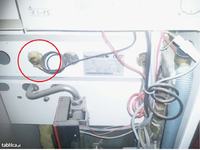Hello,
I have a Saunier Duval CO furnace (bear KLZ30) - what pressure to set in the diaphragm vessel for CO, but without draining the water from the circuit, the pressure on the furnace is 1..1.5 bar. The valve in this vessel has blown out, whether it has to be nitrogen or is it normal air.
There were similar topics, but you would have to close the circuit to the stove and drain the water, but it is easier to set the pressure without releasing but how many to set ???
but how many to set ???
:)
Greetings
Zbyszek
I have a Saunier Duval CO furnace (bear KLZ30) - what pressure to set in the diaphragm vessel for CO, but without draining the water from the circuit, the pressure on the furnace is 1..1.5 bar. The valve in this vessel has blown out, whether it has to be nitrogen or is it normal air.
There were similar topics, but you would have to close the circuit to the stove and drain the water, but it is easier to set the pressure without releasing
:)
Greetings
Zbyszek



